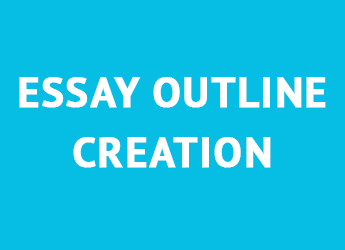Proper structure is one of the most important requirements for the success of a piece of writing, whether it’s a book, and article, or a dissertation. In a school curriculum, an essay is viewed as the most creatively free and relaxed form of writing, but it doesn’t mean it should not have a clear structure. The only difference is that when you are writing an essay, you are free to design your own outline. Find out how to create a winning outline for an essay!
What Is an Outline?
The concept of an outline is not a complicated one. Essentially, it’s a written structure of an academic piece. The outline is done in order to keep your paper follow the course and always stay on topic. A useful way of looking at an essay outline is to think of it as the backbone of the paper, something that you can always go back to when you don’t know what to write about next.
In many ways, an essay outline is similar to the structure of any online article you are reading, and the entries in the outline serve the same purpose as the headings and subheadings in the article. That is why it is so important to do a proper essay outline before beginning the writing.
How to Write an Essay Outline
Even though you have plenty of freedom when writing your essay, a typical essay outline actually stays the same and requires you to include every one of the three most important parts into your paper. After that, you can add other elements to the structure and then expand the outline by writing the paragraphs of your essay.
Introduction
The introduction of an essay is one or two paragraphs in the very beginning of an essay that are used to introduce the reader to the subject and topic covered in the paper. It is essential for the reader’s complete understanding of the topic, but it can also be very important for you to bring your thoughts in order and make your writing more organized.
Body paragraphs
The body paragraphs are the longest and most informative part of your essay. After all, it’s where all the arguments and evidence take place. The most common number of body paragraphs in an essay is three, although you can have four, five, or more. Every paragraph needs to cover a separate idea.
There are three most popular approaches to writing the body paragraphs on the essay:
- Thesis + argument, where you first present the thesis you believe is true, and then offer one solid argument to prove your point.
- Thesis + several arguments, where you provide more than one argument to illustrate your point. In this case, you can place the thesis either before or after the arguments.
- Facts + inference, where you describe the situation by giving solid facts and then draw a conclusion.
In this situation, the thesis refers to the thought you want to convey through your essay. It may be something you took from a book or current news, or formulated yourself and now want to prove with evidence.
When writing the body paragraphs of an essay, it is important to keep things brief but informative. If you can prove your point with three arguments, there is no need to write more body paragraphs if you don’t want your readers to be overwhelmed with the amount of information you are about to provide in your essay.
Conclusion
The final part of the essay is the conclusion, where the writer’s job is to summarize everything that has been said in the previous parts of the essay and once again state why their ideas are correct. When writing a conclusion, it’s important not to introduce any new ideas to the reader — everything needs to be based on what was previously said. Finish your essay with a single but strong phrase that will make the reader think further about the points you raised in your work.
How to Work on an Essay Outline
Even though the structure of a typical essay starts with an introduction, most experienced essay writers actually recommend starting with the body paragraphs and leaving the introduction part until later in your writing process. Once you have a deeper understanding of the topic of the essay and covered the main points in the body paragraphs, you can easily formulate a convincing and attention-grabbing introduction.
When writing an essay outline, it is very important to stay logical and maintain a clear structure throughout the paper. It doesn’t matter which approach you choose for your essay — whether it’s analysis and synthesis or simple to complex — the narrative of your essay should flow easily and completely immerse the reader in your ideas.
Once you write the body paragraphs, read them and are completely happy with the logical flow of your essay, you can move on to writing the introduction and then the conclusion. If you follow these steps, your next essay assignment is guaranteed to be a success!



